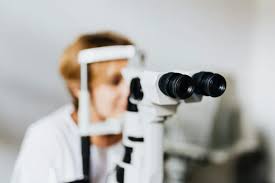Eye infections and conditions can significantly impact your daily life, affecting everything from your ability to work to your overall well-being. Learning more about these conditions can help you navigate your treatment journey more effectively. Here is more information on the role of ophthalmologists, common eye conditions, their symptoms, diagnostic procedures, and ongoing monitoring approaches:
What Are Ophthalmologists?
Ophthalmologists are medical doctors who specialize in comprehensive eye and vision care. These specialists differ from optometrists and opticians in their scope of practice. While optometrists can diagnose certain eye conditions and prescribe medications in some states, ophthalmologists can perform surgical procedures and treat complex medical eye conditions. They are qualified to provide complete eye care, from routine examinations to surgical interventions.
What Are Eye Conditions?
Eye conditions encompass a broad range of disorders that affect the eye’s structure and function. These conditions can be categorized into several types, including infectious conditions, chronic diseases, and structural abnormalities. Infectious conditions such as bacterial, viral, or fungal infections can cause inflammation and discomfort in various parts of the eye.
Chronic conditions like glaucoma, diabetic retinopathy, and macular degeneration develop gradually and may cause progressive vision loss if left untreated. Structural abnormalities such as cataracts or refractive errors affect how light enters and focuses within the eye. Understanding the specific type of condition affecting your eyes is key to receiving the most appropriate treatment.
What Are the Causes and Symptoms?
Eye conditions can arise from various causes, including bacterial or viral infections, genetic predispositions, and environmental factors. Infectious conditions typically result from pathogens entering the eye through contact with contaminated surfaces, hands, or airborne particles. Age-related conditions often develop due to natural changes in eye structure over time, while some conditions have genetic components that increase susceptibility.
Common symptoms include redness, swelling, discharge, pain, and changes in vision clarity. Infectious conditions may present with thick, colored discharge and significant discomfort. Chronic conditions may cause gradual changes in vision, such as blurriness, difficulty seeing at night, or loss of peripheral vision.
How Are Eye Conditions Diagnosed?
The diagnostic process begins with a comprehensive eye examination that includes a detailed medical history and symptom assessment. Your ophthalmologist will inquire about the onset, duration, and characteristics of your symptoms. A physical examination may involve several specialized tests and procedures. Visual acuity testing measures your ability to see clearly at various distances, and tonometry measures intraocular pressure.
How Do Ophthalmologists Monitor Them?
Monitoring eye conditions involves regular follow-up appointments to assess treatment response and disease progression. The frequency of these visits depends on the specific condition, its severity, and your individual risk factors. Acute infectious conditions may require frequent monitoring initially, with visits becoming less frequent as symptoms resolve.
Chronic conditions typically require ongoing surveillance to detect changes early and adjust treatment accordingly. Your ophthalmologist may use various monitoring techniques, including pressure measurements and imaging studies, to track disease progression. Documentation of these findings enables comparison over time and informs treatment decisions.
Treatment adjustments may be made based on monitoring results. This may involve changing medications, modifying dosages, or evaluating additional interventions. Patient education plays a valuable role in monitoring, as you may be instructed to watch for specific warning signs and report changes promptly.
Monitor Your Eye Condition
Regular monitoring of eye conditions is a collaborative process between you and your ophthalmologist. By understanding your condition and attending scheduled follow-up appointments, you can help protect your vision and maintain eye health. If you’re experiencing eye symptoms or have been diagnosed with an eye condition, schedule an appointment with an ophthalmologist now.

